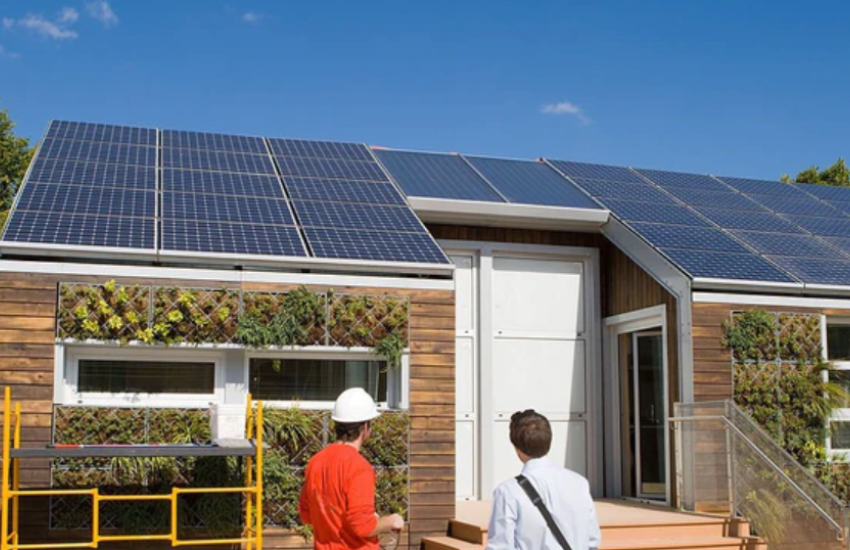10KW solar energy system Disadvantages
Of course, solar photovoltaic power generation also has its shortcomings and shortcomings, which can be summed up in the following points.
①Low energy density. Although the total amount of energy thrown by the sun to the earth is extremely large, due to the large surface area of the earth and the fact that most of the earth's surface is covered by oceans, the solar energy that can really reach the land surface only reaches about 10% of the solar radiation energy of the earth, resulting in terrestrial units. The solar energy that can be directly obtained on the area is less. Usually expressed in terms of solar irradiance, the highest value of the irradiance on the earth's surface is about 1.2kw/m2, and it is lower than 1kw/m2 in most areas and most of the time. The utilization of solar energy is actually the collection and utilization of low-density energy.
②It covers a large area. Due to the low energy density of solar energy, the area of the photovoltaic power generation system will be very large. Every 10kw photovoltaic power generation power occupies an area of about 100 square meters, and the average power generation power per square meter area is 100w. With the maturity and development of photovoltaic building-integrated power generation technology, more and more photovoltaic power generation systems can utilize the roofs and facades of buildings and structures, which will gradually overcome the shortage of large area of photovoltaic power generation.
③The conversion efficiency is low. The most basic unit of a 10KW solar energy system is the solar cell module. The conversion efficiency of photovoltaic power generation refers to the rate at which light energy is converted into electrical energy. At present, the conversion efficiency of crystalline silicon photovoltaic cells is 13% to 17%, while that of amorphous silicon photovoltaic cells is only 5% to 8%. Since the photoelectric conversion efficiency is too low, the power density of photovoltaic power generation is low, and it is difficult to form a high-power power generation system. Therefore, the low conversion efficiency of solar cells is a bottleneck hindering the large-scale promotion of photovoltaic power generation. <br />
④ Intermittent work. On the surface of the earth, photovoltaic power generation systems can only generate electricity during the day and cannot generate electricity at night. Unless there is no distinction between day and night in space, solar cells can continuously generate electricity, which is inconsistent with people's electricity needs.
⑤ It is greatly affected by climatic and environmental factors. The energy of the 10KW solar energy system comes directly from the sunlight, and the sunlight on the surface of the earth is greatly affected by the climate. Long-term changes in rain and snow, cloudy, foggy and even cloud layers will seriously affect the power generation status of the system. In addition, the influence of environmental factors is also great. The more prominent point is that particulate matter (such as dust) in the air settles on the surface of the solar cell module, blocking part of the light irradiation, which will reduce the conversion efficiency of the cell module. This results in a reduction in power generation and even damage to the panels.
⑥ Strong regional dependence. Different geographical locations and different climates make the sunshine resources in different regions very different. Photovoltaic power generation systems are only effective when applied in areas with abundant solar energy resources.
⑦ System cost is high. Due to the low efficiency of solar photovoltaic power generation, the cost of photovoltaic power generation is still several times that of other conventional power generation methods (such as thermal power and hydropower) so far, which is the most important factor restricting its wide application. However, it should also be noted that with the continuous expansion of solar cell production capacity and the continuous improvement of cell photoelectric conversion efficiency, the cost of photovoltaic power generation systems has also dropped very quickly. The price of solar modules has dropped over the decades from an initial price of more than $70 a watt to around $2 a watt today.
⑧ The manufacture of crystalline silicon cells is highly polluting and energy-intensive. The main raw material of crystalline silicon battery is pure silicon. Silicon is the most abundant element on earth after oxygen, and its main form is sand (sio2). Step by step from silica sand to crystalline silicon with a purity of more than 99.9999%, it has to undergo multiple chemical and physical processes, which not only consumes a lot of energy, but also causes certain environmental pollution.




